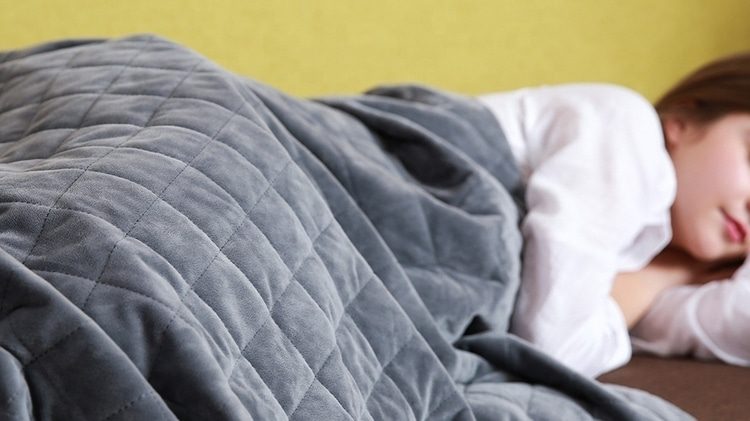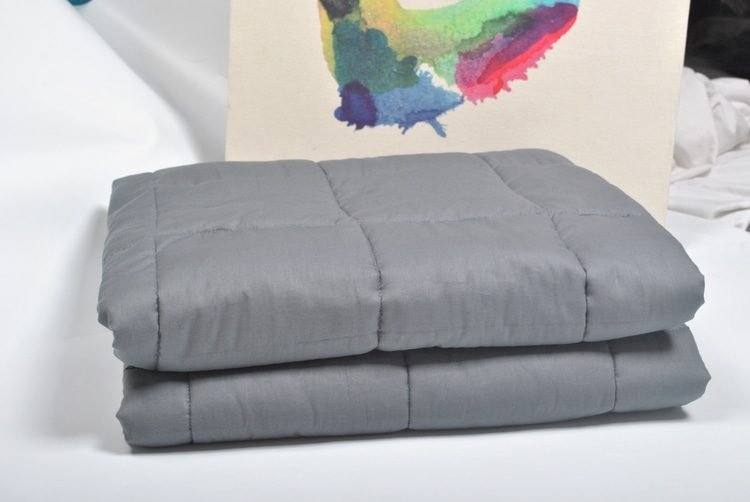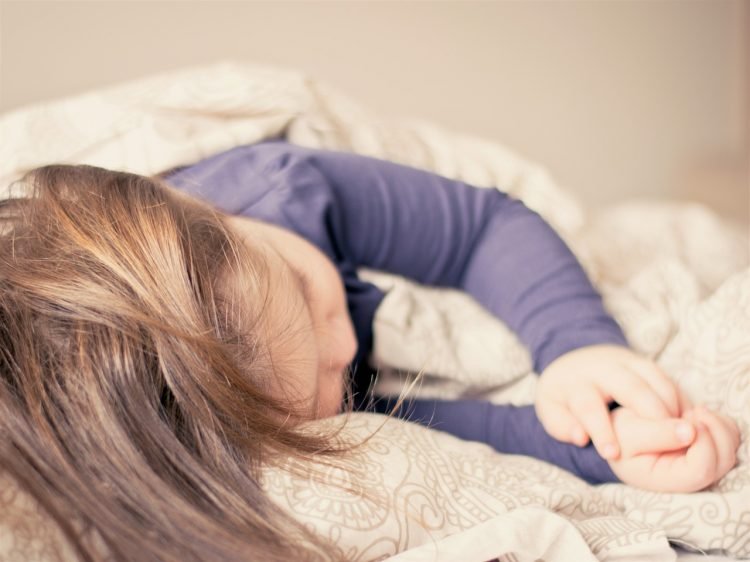Weighted blankets that were once restricted to only hospitals and psychiatry clinics are now mainstream. Designed to simulate the benefits of deep touch therapy, weighted blankets are quite effective in treating stress-related and sensory processing disorders in children and adults, alike.
While the added weight of these blankets offers multiple therapeutic benefits, there is also a certain degree of risk associated with their use. This is especially true for young children and elderly who might need extra supervision when using weighted products that are heavy and can restrict free movement.
You need to be extra careful in such cases and be fully aware of the safety do’s and don’ts!
Evaluating the safety of weighted blankets for children
Before we delve further into the benefits and possible risks of weighted blankets for children, it is important to understand that these blankets are not recommended for infants less than 2 years of age.
Currently, the American Association of Pediatrics (AAP) restricts the use of heavy blankets, cushions, soft toys, or other such products around babies while they are sleeping or napping.
As per AAP’s guidelines, heavy and layered products can increase the risk of suffocation and SIDS in infants and toddlers, and are best avoided. This is also true for children with developmental disorders who might find it challenging to manage heavy fabrics and products.
Normally, older children can safely use and benefit from weighted blankets in several ways.
Based on the principle of deep touch pressure therapy, weighted blankets and vests provide proprioceptive input to the body’s central nervous system (CNS). This input calms the CNS which, in turn, aids sensory processing and helps children suffering with sensory integration disorders.
The swaddling effect and warmth of these blankets helps children relax, feel secure, sleep better and for longer hours. Weighted products are also used as a part of therapy for children diagnosed with autism and ADHD (attention deficit hyperactivity disorder).
What makes these blankets therapeutic is the filling inside them, which could be poly pellets, light weight glass beads, or even chain-like structures sewn right into the fabric with extra padding.
The added weight acts on the body’s sensory points and exerts even pressure across the joints and muscles. As a result, your body’s sensory mechanism is activated which triggers the release of neurotransmitters—serotonin and melatonin. These in turn promote better sleep, improve focus, and offer an overall sense of calm and comfort.

With such powerful benefits parents might be tempted to use a weighted blanket for their child on a regular basis. However, use of these products for infants can put them at a risk for suffocation, SIDS (sudden infant death syndrome) and other sleep-related injuries—thus should be avoided till the children are able to put on and remove these blankets on their own.
Parents or caregivers must also avoid using weighted blankets when sitting or sleeping with infants to prevent injuries and accidental strangulation. You can instead opt for weighted lap pads or vests for younger children that are equally comforting and can offer similar benefits as that of a weighted blanket.
When using a weighted blanket under a doctor’s approval, you must exercise caution and closely supervise the child for any signs of discomfort. You must also talk to the caregiver and instruct them on the correct use of these blankets for your child.
Ensure that the mouth and nose are not covered under the blanket as that can obstruct breathing and lead to fatalities.
Weighted blankets are customized as per the weight of the individual using it. In case of children too, the blanket should be no more than 10% of the child’s body weight and made of softer fabric that doesn’t irritate their delicate skin.
A child should be able to move independently when wrapped under one, and ideally should be able to remove the blanket themselves.
Weighted blankets: a therapeutic aid for adults
The principle on which weighted blankets work is simple—it stimulates the body’s sensory points to trigger the release of serotonin and dopamine, two neurotransmitters that are responsible for managing your emotions and sleep.
Research suggests that exerting slow and gentle pressure across your joints and muscles can promote feelings of relaxation and overall comfort.
Weighted blankets are especially beneficial for people suffering from sleep-related disorders such as insomnia, restless leg syndrome, or mental ailments such as anxiety and depression.
Deep pressure touch (DPT) is therapeutic in many ways and can help you stay relaxed and rejuvenated. However, when using DPT-based products such as weighted blankets you need to exercise a bit of caution mainly due to the added weight of these products.

As a common outlook, weighted blankets do not pose any risk for physically healthy adults. However, the added weight in these quilted fabrics makes them a bit risky for adults with physical disabilities or frail elderly who are too weak to handle such blankets independently.
The main criteria here is the weight of the blanket! As a rule, they should be no more than 10% of the user’s body weight, but in specific cases you can opt for lighter ones that are easier to manoeuvre.
That said, the added padding and filling is what makes these blankets therapeutic and a powerful aid for deep pressure stimulation.
In fact, weighted blankets are often recommended to help people with anxiety and sleep disorders. When used with caution, these blankets are completely safe and beneficial in most cases.
Safety of weighted blankets: A clinical study
A group of researchers conducted a study to measure the effectiveness and safety of weighted blankets in a diverse population. The trial group consisted of 30 participants (a mix of male and female) in the age group of 18-50 years. The safety statistics recorded critical data such as blood pressure, pulse rate and oximetry readings before and after using a 30-pound weighted blanket.
All participants showed a significant improvement in anxiety levels and reported an overall sense of well-being after using the blanket. On the safety scale too, there were no adverse effects recorded and the readings on the three vital scales remained within normal range.
The study shows that not only are weighted blankets completely safe for most adults, they are quite effective too. However, the inference is in no way applicable to infants, frail elderly, or adults with physical disabilities. In such cases, it is best to use weighted blankets and lap pads under proper supervision, to avoid injuries and unfortunate accidents.
Using weighted blankets: Precautions and safety tips
Weighted blankets, lap pads and vests are in most cases completely safe and effective to use. If you are planning to get one, here’s a quick list of safety measures you can take to avoid injuries:
- Choose an appropriately sized blanket for every member of the family, in case of multiple users. When using for a child, ensure that he/she can move freely within the blanket and is also able to remove it on his own.
- Avoid using weighted products for infants younger than 2 years. The weight and warmth of these blankets can be overwhelming for infants, and can sometimes be fatal.
- When recommended by a doctor, elderly patients and young children must use weighted blankets only under the supervision of a trained physician or therapist. There are specific licensing regulations regarding the use of such blankets and other sleeping aids, thus childcare centers must verify and work as per their state’s policies before using one.
- The use of weighted blankets is contraindicated for people suffering from asthma, obstructive sleep apnea, COPD, or other lung disorders. The blankets exert extra pressure on the chest and can make breathing more challenging for people with these conditions.
- The filling material for the weighted blankets must also be chosen with care. Try to avoid organic fillings like rice, corn kernels or grains such as wheat or barley. Such fillings can get spoilt quickly and become home to bacteria, mold and mites. These materials can also create allergic reactions in some individuals, and are best avoided.
- Look for the stitching when choosing a blanket. The edges should be sealed properly with double stitches to prevent the filling from coming out. Another aspect to look for is the pattern of blocks or squares. As a rule, smaller squares (less than 5.25”) are better for even distribution of pressure.
- Weighted blankets can get quite warm due to the fillings and quilted fabric, and sometimes result in overheating. Thus, it is best to go for neutral fillings such as poly pellets or glass beads, and lighter cotton fabric that allow the flow of air keeping the blanket comfortably warm.
- To ensure you get maximum and long-term benefit from your weighted blanket, it is important to care for them properly. Check your blankets regularly for any signs of wear and tear such as spilled filling, open stitches, worn out fabric, etc. Get such blankets repaired or replaced immediately.

Just like other forms of alternative therapy or sleep aids, use of weighted blankets too is subject to its own set of risks and disadvantages. You need to exercise caution when using them for children and elderly people with physical disabilities.
As a rule, anyone who feels uncomfortable when wrapped under a weighted blanket or is unable to manage its weight should avoid using these products.
For others, however, weighted blankets can offer multiple benefits in terms of promoting better sleep, relaxing the body’s muscles and joints, improving sensory processing functions, and offering an overall sense of calm and comfort.
With proper guidelines in place, weighted blankets can be used safely for adults and children and have been proven to offer significant relief in multiple disorders.

